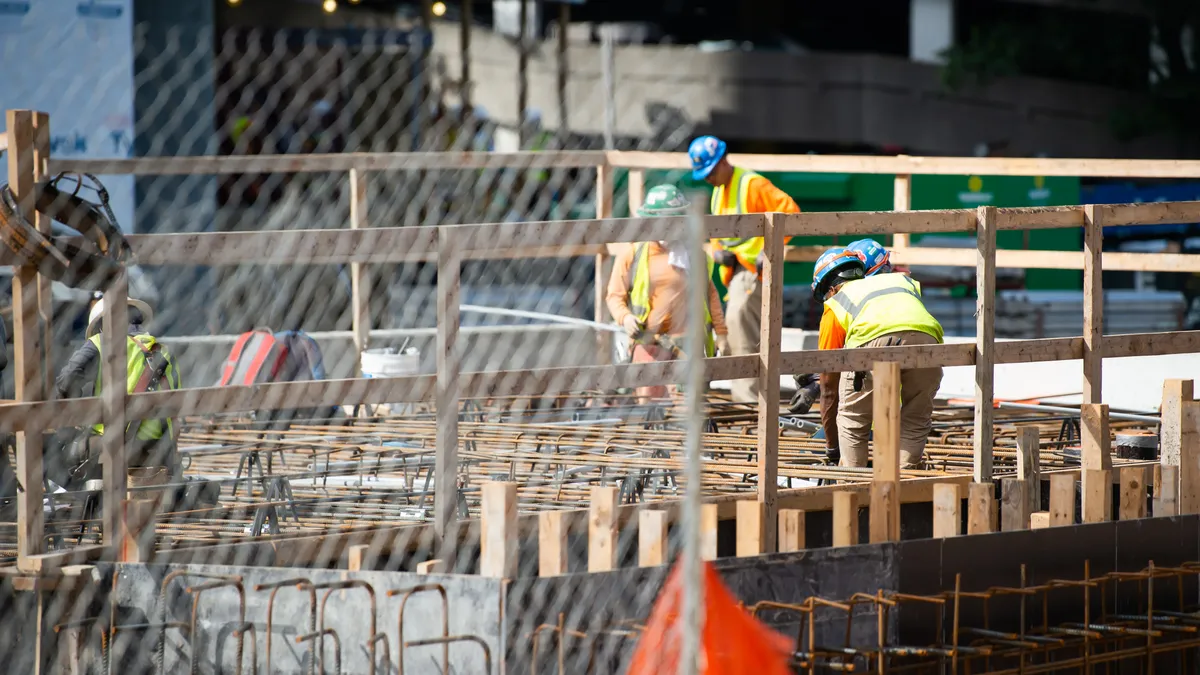Dive Brief:
- Construction input prices were 1.1% lower than a year ago in April, the second consecutive month that the cost to build a given project decreased compared to the same period in 2022, according to an Associated Builders and Contractors analysis of government data released Thursday.
- For the month, overall construction prices inched up 0.2%, while nonresidential costs gained 0.4%. Still, those relatively minor increases couldn’t overshadow the latest positive takeaway for construction when it comes to material prices: They are generally going in the right direction after the pandemic’s historic inflation rates.
- “This PPI release provides some good news for an industry that has dealt with a nearly 40% increase in construction costs since the start of the COVID-19 pandemic,” said Anirban Basu, chief economist at ABC. “But inflation remains a pressing issue for the industry and the broader economy.”
Dive Insight:
The second straight month of annual declines came after construction material prices did nothing but go up for 18 months in a row, according to ABC.

Some notable construction materials to decline in price over the past year include natural gas, down 64.1%, and softwood lumber, down 38.9%, according to ABC. Meanwhile, unprocessed energy materials tumbled 29.1%, followed by a 20.4% drop in crude petroleum, according to the report.

Yet despite that trend, Basu struck a note of caution regarding the recent Consumer Price Index, which jumped 4.9% over the past year in April, well above the Federal Reserve’s 2% target, he said. CPI is a more important indicator for monetary policy and economic sentiment.
He also noted that contractors’ bottom lines were also starting to sink despite reduced material prices, because of higher costs in other areas.
“Despite the annual decline in input costs, contractors’ profit margins are still under pressure,” said Basu. “Due to higher borrowing costs and labor costs and the substantial increase in materials prices over much of 2021 and 2022, the proportion of contractors that expect their profit margins will increase over the next two quarters has slipped in recent months.”
Not down everywhere
Some materials that have dropped in price recently have still posted year-over-year increases, said Ken Simonson, chief economist at the Associated General Contractors of America.
For example, over the course of a year, prices jumped 13.7% for cement, 13.3% for electrical switchgear, 13.2% for concrete products and 12.1% for gypsum building products, according to an AGC report on materials prices.
That volatility for many key construction materials is “making it difficult for contractors to bid projects that may take years to complete,” said Simonson.
Meanwhile, a Bureau of Labor Statistics index that measures contractors’ bid prices — or what they would charge for a given construction project — declined 0.3% in April.
That indicates contractors are getting squeezed by rising materials prices at a time when what they charge to build projects is declining, said Simonson.














